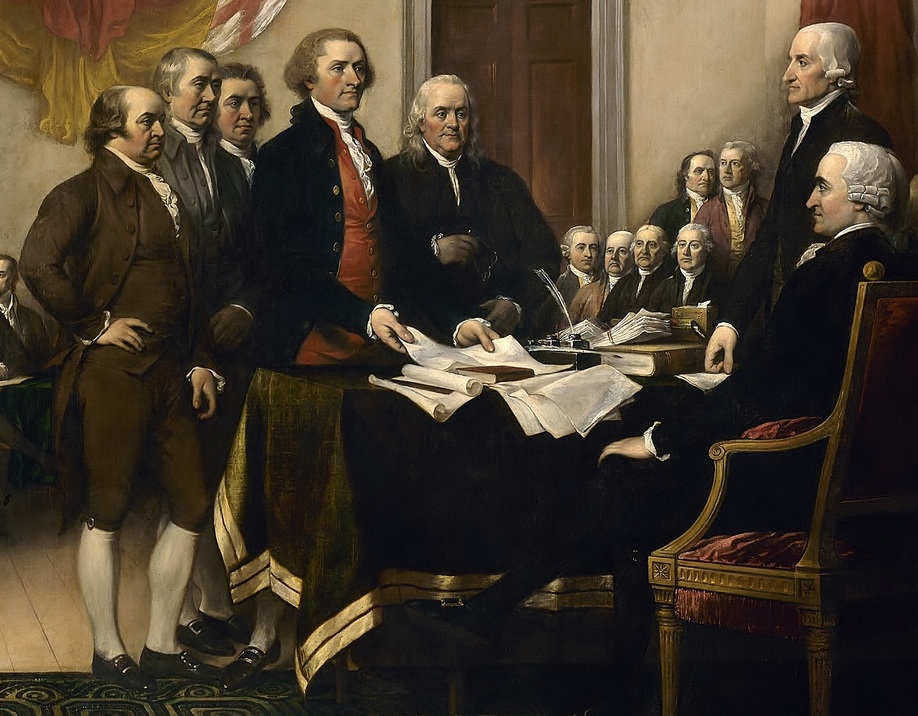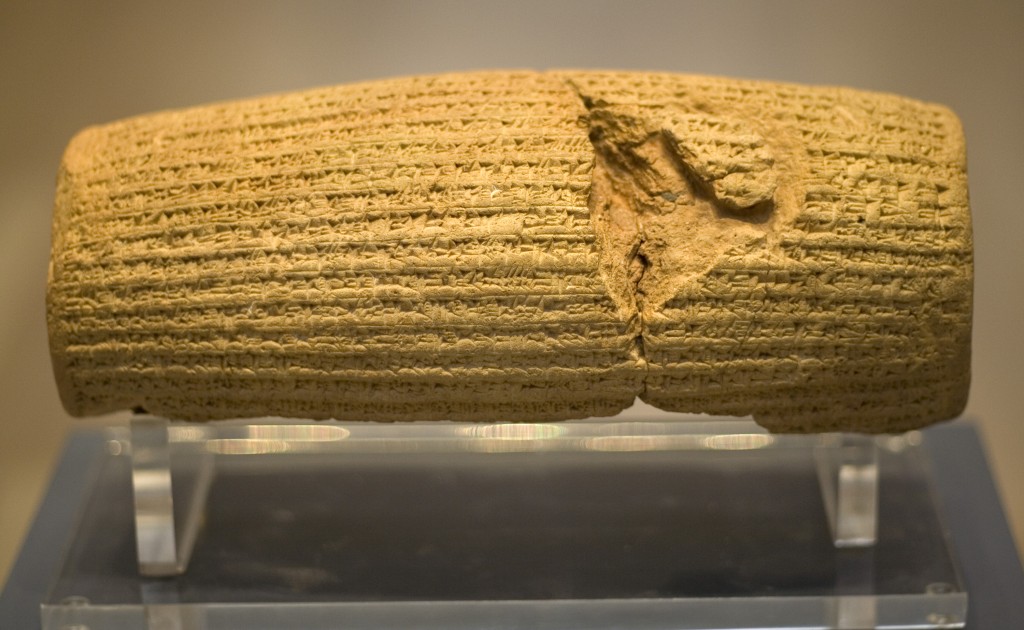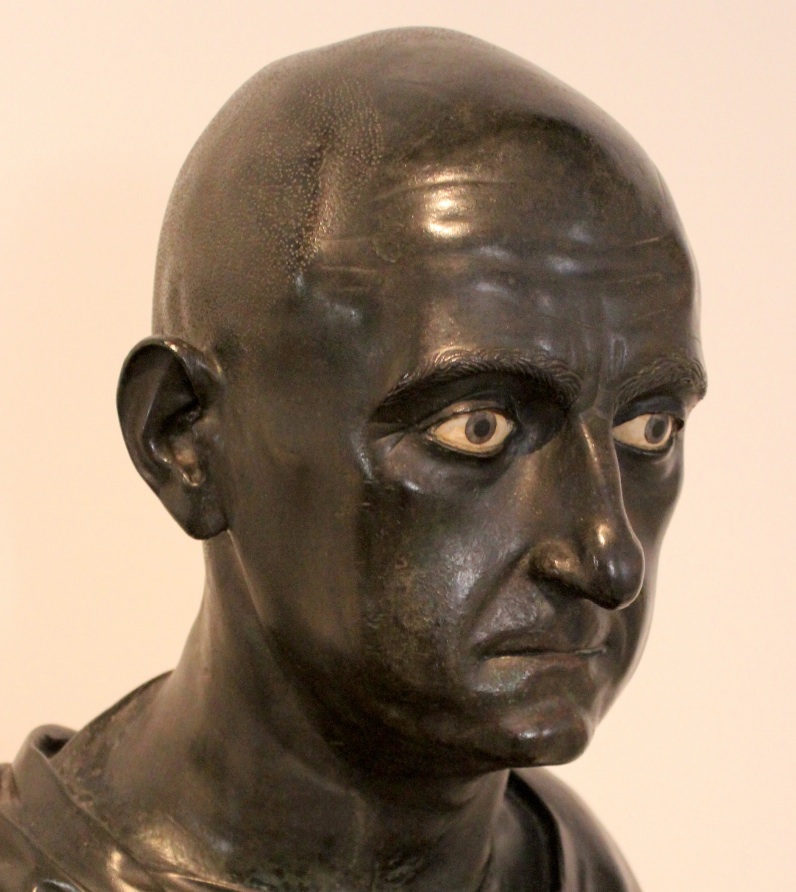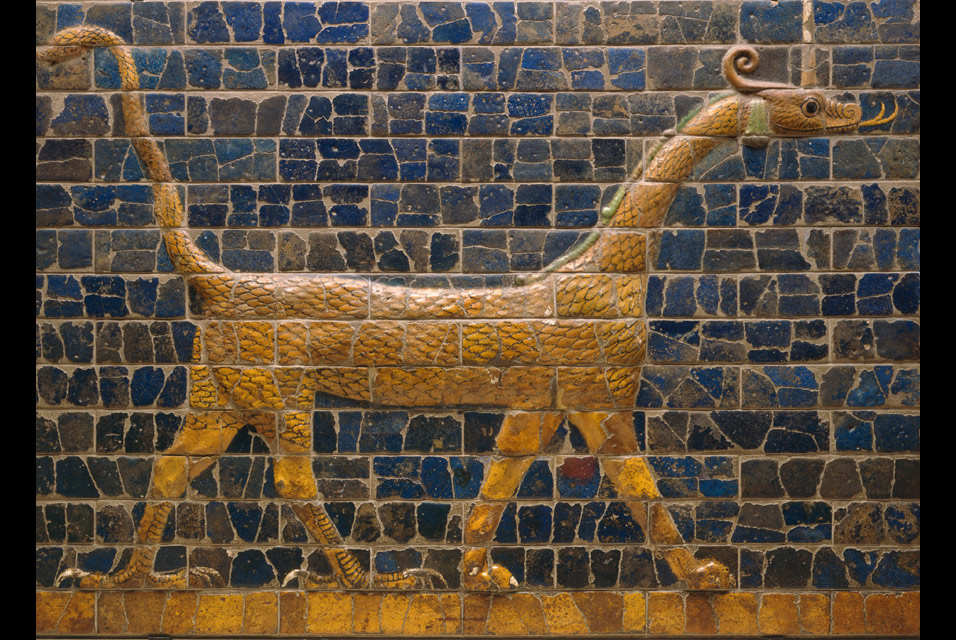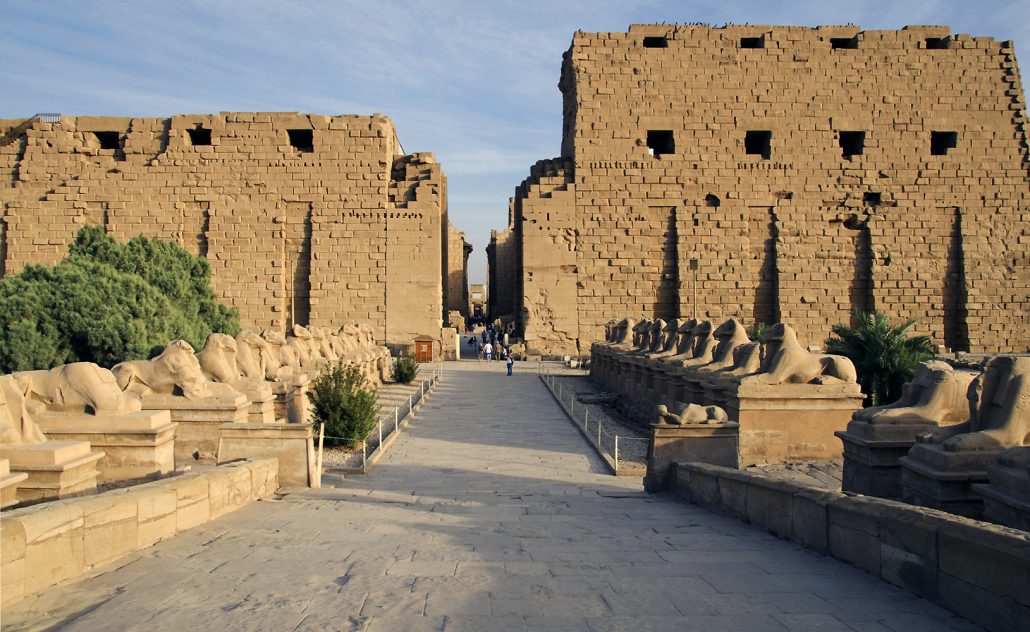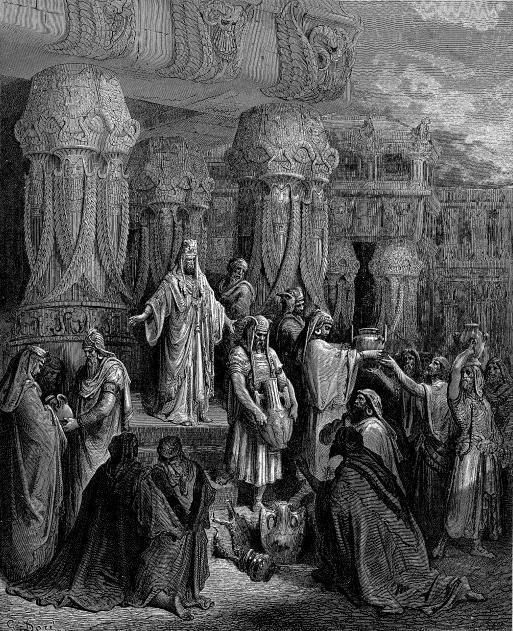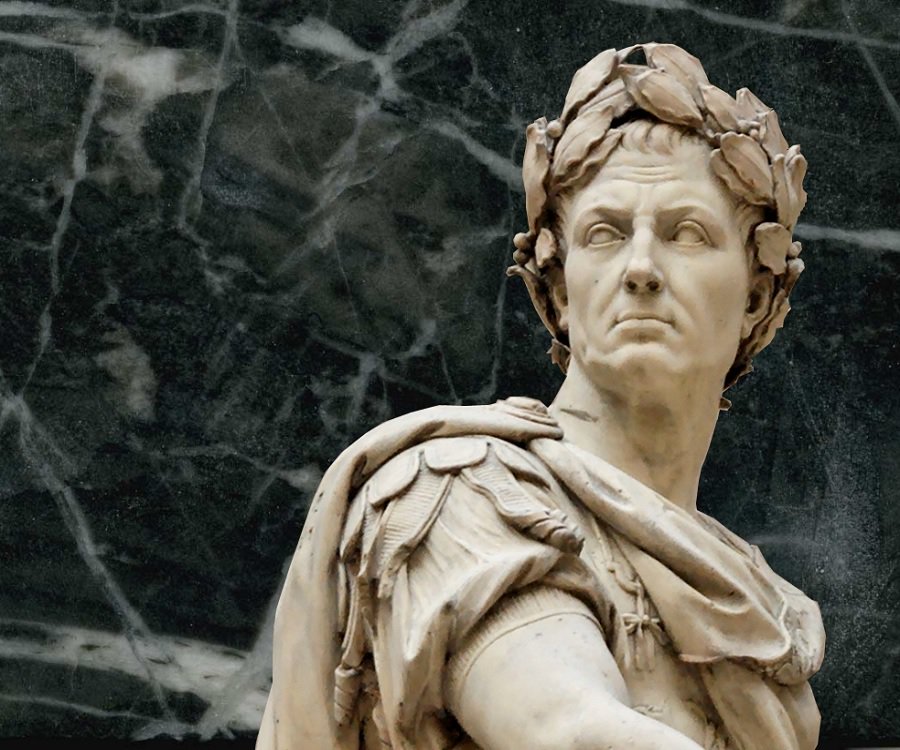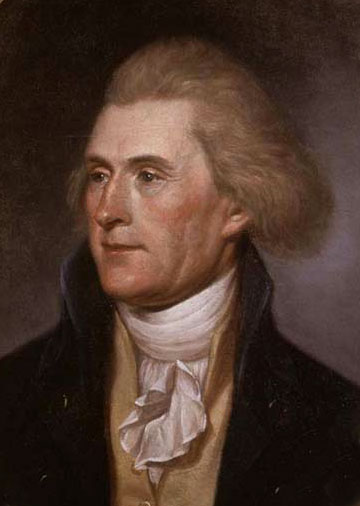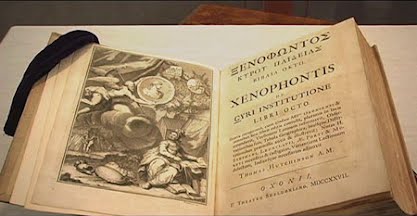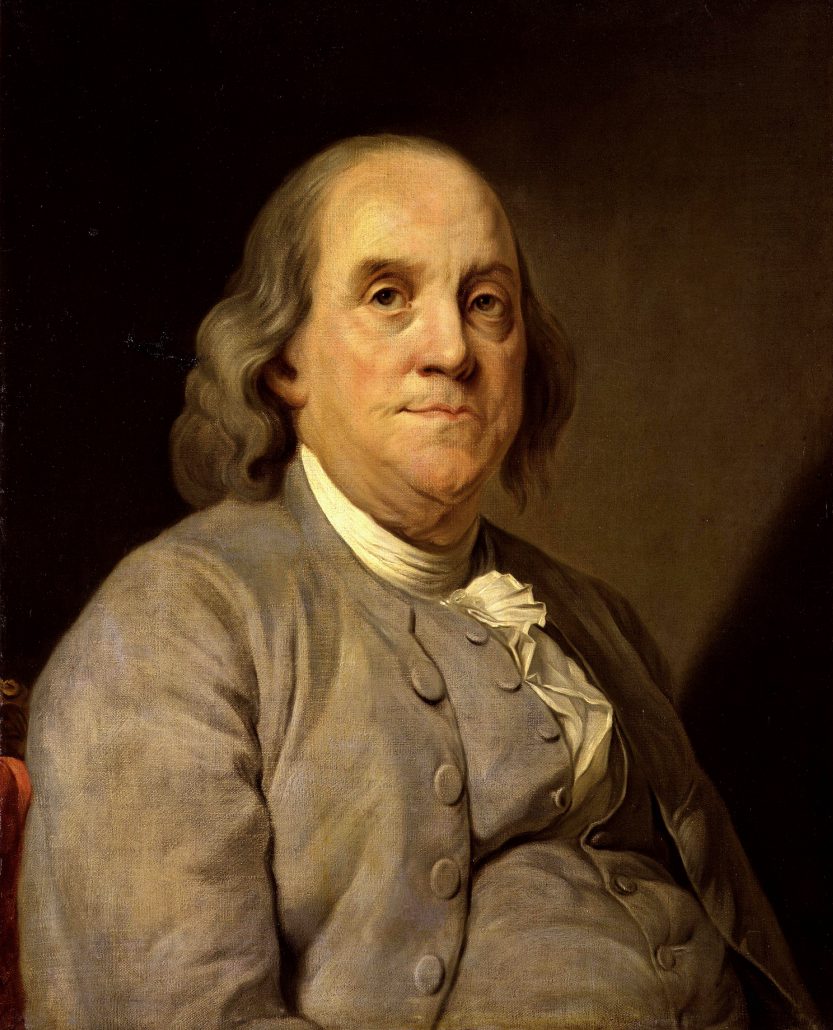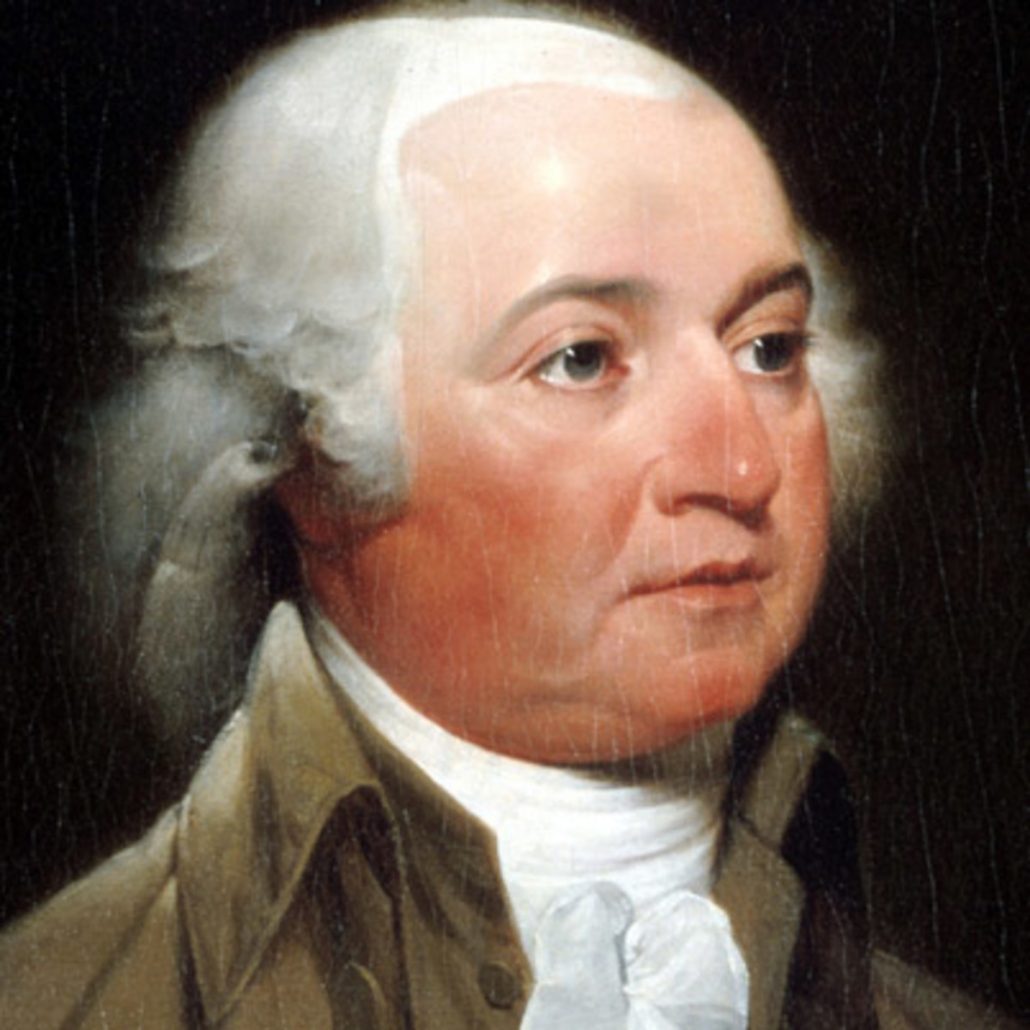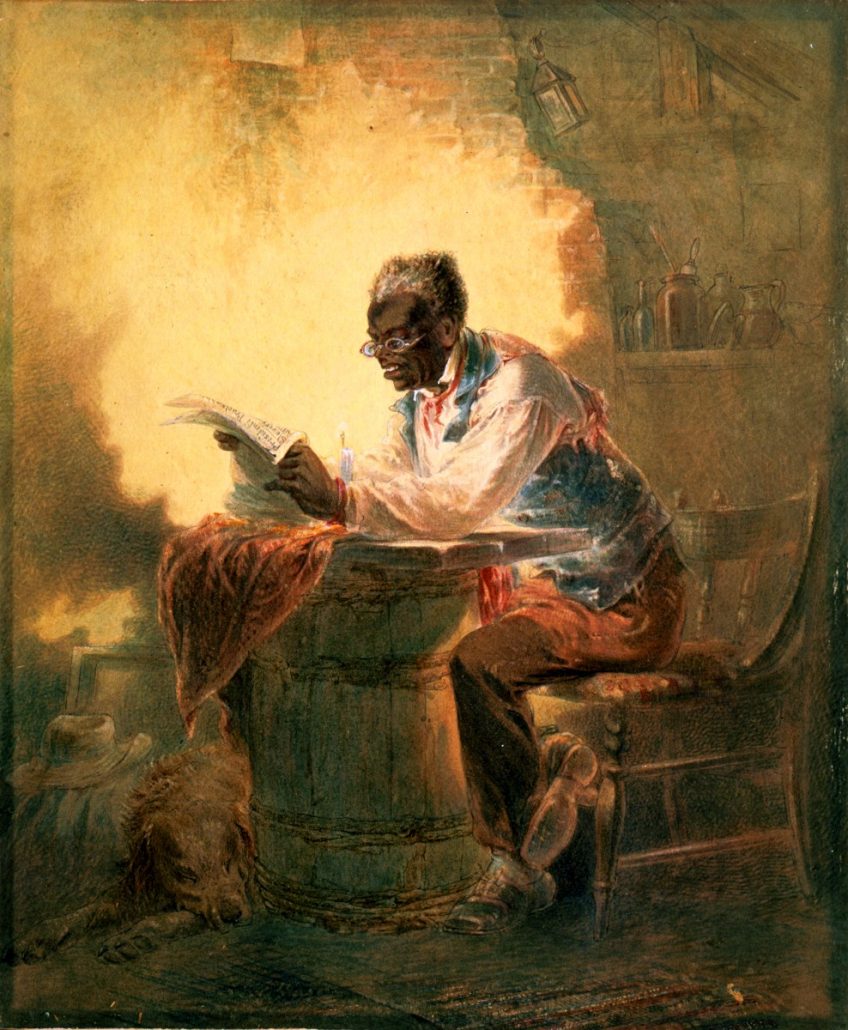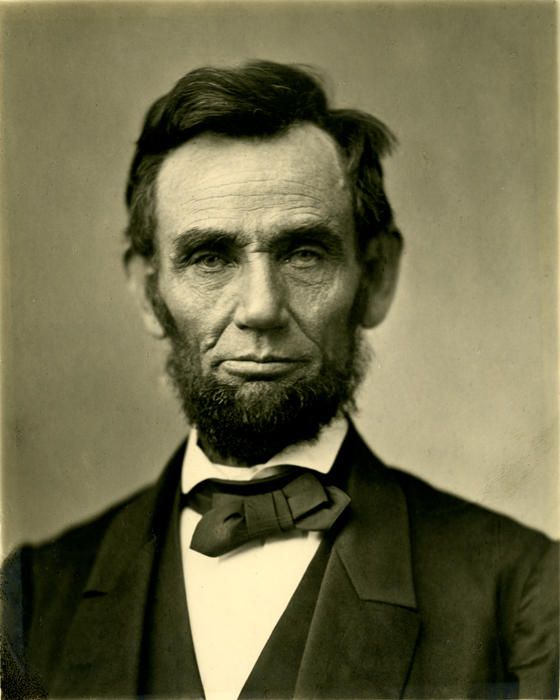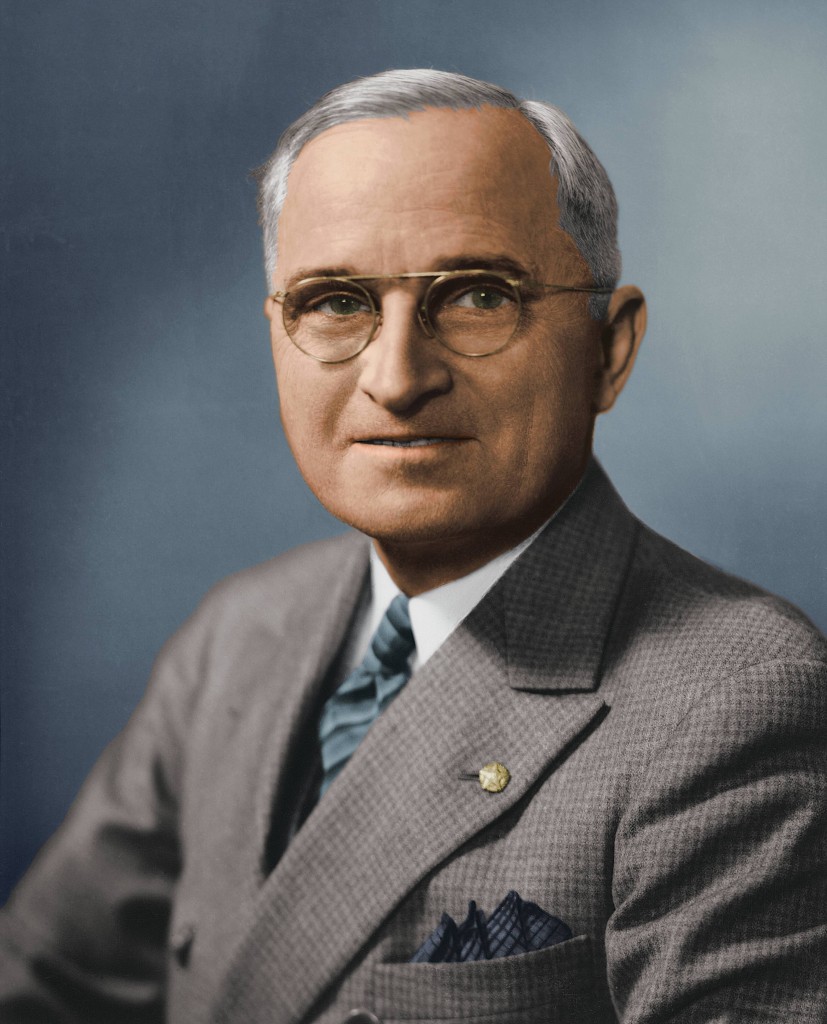The Founding fathers of the United States, especially Thomas Jefferson (1743-1826), John Adams (1735-1826) and Benjamin Franklin (1706-1790) were strongly influenced by Cyrus the Great’s (approx. 600-530 BCE) legacy of governance.

John Trumbull’s 1819 painting of the Declaration of Independence (Public Domain with original painting in the Capitol Building of Washington DC). This depicts the Committee of Five presenting their document to Congress on June 28, 1776. Less known is the fact that the Founding fathers of the United States admired and consulted Cyrus’ legacy of governance as described in the Cyropaedia (Greek: Kúrou Paideía = The Education of Cyrus).
Cyrus the Great, the founder of the Achaemenid Empire, entered the city of Babylon on October 29, 543 CE, a full 17 days after his ally Babylonian General Gubaru had arrived at the Metropolis. According to the Nabonidus Chronicle (III, 12-22), Cyrus was welcomed as a liberator by the local citizenry:
“In the month of Arahsamah, the third day, Cyrus entered Babylon, green twigs, doubtless reeds or rushes to smooth out the path of his chariot … The state of peace was imposed on all the city. Cyrus sent messages of greetings to all of Babylon”
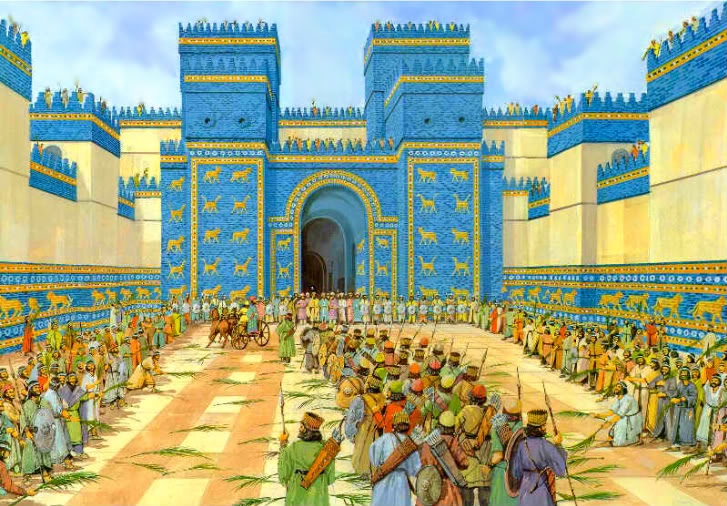
A depiction of Cyrus the Great in his (ceremonial?) chariot as he enters Babylon City with his retinue on October 29, 543 CE (Source: El Palacia De Las Nueve Lunas). The Nabonidus Chronicle states that as Cyrus entered the city, twigs and reeds were laid by local citizens along the path of his chariot.
Cyrus’ conduct in Babylon is later corroborated by Greek historian and soldier Xenophon (c.430-354 CE) in his “Education of Cyrus” or Cyropaedia (VII, 5, 20-26).
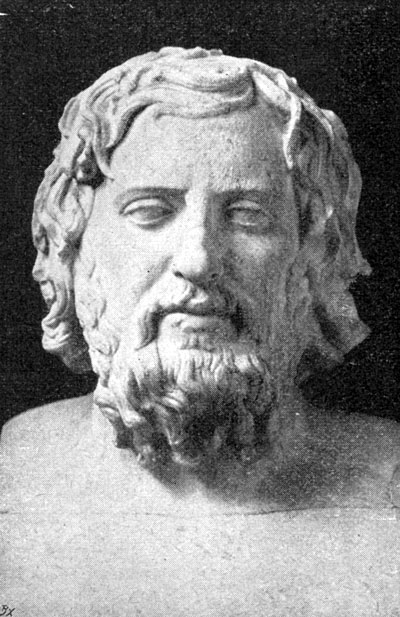
Xenophon (431-355 BC) wrote a compendium of Cyrus, known as the Cyropaedia. The Cyropaedia has been consulted as a standard reference of statesmanship by a number of prominent leaders in world history. Readers can access the Cyropaedia translated by H.G. Dakyns by clicking here …
One example of Cyrus’ statesmanship was his respect for the diversity of theology, languages and cultures. Upon his arrival into Babylon, Cyrus proclaimed his humility and respect for the Babylonian God Marduk. As noted in the Cyrus Cylinder (discovered in March 1879 by excavation work for by the British Museum):
“Marduk, the great lord, bestowed on me as my destiny the great magnanimity of one who loves Babylon, and I every day sought him out in awe.”
[Translation of Cyrus Cylinder, British Museum, 2009]
The Cyrus Cylinder (The British Museum)
For more articles on Cyrus the Great and the Cyrus Cylinder see here:
کوروش بزرگ -Cyrus the Great & the Cyrus Cylinder
Perhaps most remarkable is how little is known today of the influence of Cyrus’ legacy upon the Founding Fathers of the United States. This is because Cyrus was well known to Greco-Roman civilization, thanks to Xenophon’s Cyropaedia. The Roman statesman Scipio Africanus (236-183 BCE) had a copy of the Cyropaedia.
Scipio Africanus of Rome as depicted in a mid 1st century BCE Roman bust of bronze, currently housed at the Naples National Archaeological Museum (Inv. No. 5634) (Source: Miguel Hermoso Cuesta in Public Domain). Scipio Afriocanus regularly consulted his copy of the Cyropaedia.
Scipio like many Classical and Western statesmen to come after him, knew well of Cyrus and his adaptive policies of governance by way of the Cyropaedia. Looking further into Cyrus’ policies upon his arrival in Babylon, as inscribed upon the Cyrus Cylinder:
“My vast army marched into Babylon in peace; I did not permit anyone to frighten the people of [Sumer] /and\ Akkad. …relieved their wariness and freed them from their service. Marduk, the great lord, rejoiced over [my good] deeds.”
Note that Cyrus cited Marduk, the god of Babylon, and not the supreme Zoroastrian deity Ahura-Mazda.
A Snake-Dragon image-symbol of Marduk, the patron God of Babylon (Panel of glazed earthenware bricks, Ishtar Gate, c. 604-562 BCE) (Source: Detroit Institute of Arts). Instead of plunder and destruction, like the former kings of the preceding Near Eastern empires, Cyrus paid homage to the local Babylonian god Marduk and ensured that no looting, plunder or destruction took place in that ancient city. More recently, a tribute to Marduk was found at Persepolis (see here …)
Cyrus also showed concern for the day to day living circumstances of local citizenry by ordering the restoration of Babylon-City’s Derelict quarters – as cited on the Cylinder:
“…bought relief to their dilapidated housing [in Babylon-City] putting an end to their complaints…”
In essence, this was an order for a slum clearance program. Among Cyrus’ other policies of note were:
- Restoration of gods to their enclosures in Babylon
- Re-institution of the New Year Festival
- Policy of racial and religious equality & acceptance
- Deported peoples allowed to return home
- Destroyed Temples ordered to be restored
While several top historians have examined Cyrus the Great and his legacies, perhaps one of the most enduring observations remain that of late Professor William James (Will) Durant (1885-1981):
“The first principle of his [Cyrus the Great] policy was that the various peoples of his empires would be left free in their religious worship and beliefs…Instead of sacking cities and wrecking temples he showed a courteous respect for the deities of the conquered, and contributed to maintain their shrines…Like Napoleon he accepted indifferently all religions, and-with much better grace-honored all the gods.” [Durant, 1942, page 353; Durant, Will (1942) The Story of Civilization:(Part One): Our Oriental Heritage. New York: Simon & Shuster]
An ingress route to the Temple of Amon in Egypt (Source: Khan Academy). Achaemenid kings such as Cambyses and Darius the Great consistently provided funds and support for the reconstruction and repair of Egypt’s temples.
With respect to Achaemenid rule in general, Young notes:
“Because of the religious, ethnic and social tolerance with which the Achaemenids chose to rule, one cannot speak of an imperial social structure. Earlier attempts at empire in ancient West Asia had been anything but tolerant. Why therefore were the Achaemenids so different?” [Young, T.C., The Achaemenids (559-330 BC), pp.160, in Cotterell, A. (Editor) (1993). Classical Civilizations. Middlesex, England: Penguin Books].
This is a question that scholars have been examining for decades. The legacy of Cyrus’ policies are corroborated by independent Greek and Biblical sources independent of each other and further documented by archaeological finds in Mesopotamia (modern Iraq), Egypt and Western Anatolia (in Modern Turkey).
As noted by the late Max Von Mallowan (1904-1978) in the Cambridge History of Iran:
“Religious toleration was a remarkable feature of Persian rule and there is no question that Cyrus himself was a liberal-minded promoter of this humane and intelligent policy.” [Max Von Mallowan. Cyrus the Great. In Cambridge History of Iran (Volume 2: The Median and Achaemenean Periods), Cambridge, Cambridge University Press, pp.392-419.]
Biblical sources provide a very comprehensive perspective on Cyrus’ system of rule. The Old testament describes Cyrus (cited as Koresh) as a Messiah, or more specifically as Yahweh’s anointed (Book of Ezra, Chapter 1). Viewed as a savior of Jews, Cyrus is described as follows in Isaiah:
“He [Cyrus] is my Shepherd, and he shall fulfill all my purpose” (Isaiah, 44.28; 45.1; see also 35, 40-55).
The West Wall in Jerusalem. After his conquest of Babylon, Cyrus allowed the Jewish captives to return to Israel and rebuild the Hebrew temple. It is believed that approximately 40,000 did permanently return to Israel. President Truman in his support for the Jews in the twentieth century, evoked the name of Cyrus.
It is believed that up to 40,000 Jewish exiles in Babylon were allowed to return to Israel. Using funds from the imperial treasury, Cyrus financially supported the Jews in rebuilding their Temple in Jerusalem (Ezra III: 7). Cyrus also ordered that sacred Hebrew utensils confiscated by Babylonian king Nebudchadnezzar (reign approx: 605–562 BC) now be restored to their rightful Jewish owners (Ezra I: 7-8).
Gustave Dore’s painting of Cyrus the Great restoring the sacred vessels of the temple to the Jews (Posted in the KingFoska Files website). When Cyrus conquered Babylon, he ordered the sacred religious objects of the Jerusalem Temple to be restored to their rightful owners, the Jews.
Cyrus’ policies did not simply end after the passing of Cyrus. Under Darius I, the Achaemenid Empire continued these policies. Note that by Darius’ time in the 4th century BCE, the Achaemenid Empire now contained approximately 42 million citizens, or roughly 27% of the world’s populace. Darius’ rule resulted in the creation of remarkable wealth and prosperity for the citizenry, in large part due to the understanding that a policy of inclusion, tolerance and openness to peoples, creeds, languages and ideas helps to propel the rise of a powerful and robust economy.
Such policies may again explain why one of history’s most important statesmen, Julius Caesar (100-44 BCE) also read the Cyropaedia. This is noteworthy as not only does this dispel the false narrative of the so-called historicity of the “Clash of Civilizations” but serves to highlight Cyrus’ legacy (through the Cyropaedia) in the system of Roman rule. Put simply, like the Achaemenids, Rome was an imperial power, however (like the Achaemenids) it was also highly cosmopolitan and tolerant of different cultures and creeds.
Julius Caesar (100-44 BCE) (Source: ForWallpaper).
The Romans were well versed in the literature of the Greeks notably Plato who presented Cyrus as having attained the ideal harmony in governance. Xenophon’s aforementioned Cyropaedia presented Cyrus as a leader who extolled the ideals of balance and tolerance in government. As noted by Sheda Vasseghi in her PhD Dissertation published in 2017 entitled “Positioning Of Iran And Iranians In Origins Of Western Civilization” (University of New England, Academic advising Team: Marylin Newell, Laura Bertonazzi, Kaveh Farrokh):
“… Later rulers such as Alexander the Great, Hellenistic kingdoms, Roman and Byzantine emperors, and Muslim caliphs will adopt the idea of Persian absolute kingship, Persian imperial model such as the satrapal system and institutions, or wish to emulate Cyrus the Great’s policies (Cole & Symes, 2017; King, 2000; Noble et al., 2011). Sherman and Salisbury (2014) stated in the story of the West, “the Persian Empire marks a culmination of the first stirrings of Western civilization in the ancient Middle East” followed by the Greeks (p. 36).”
It is perhaps thus remarkable that 23 centuries after the passing of the Achaemenid Empire, the Founding Fathers of the United States knew full well of Cyrus and his legacy of governance. Note that the Founding Fathers (who laid the Foundation for the American Republic) and Cyrus (who established the monarchy of ancient Iran) had three characteristics in common:
- Tolerance of diverse creeds, languages, religions, etc.
- The rule of law (justice)
- Equality of all citizens
Thomas Jefferson (1743-1826), the primary author of America’s Declaration of Independence from England, had two of his own copies of the Cyropaedia (bilingual Greek & Latin version published in Europe, 1767, currently held at the Library of Congress). Jefferson frequently read his Cyropaedia and expressed his affinity for the separation of Church and State alongside the freedom of worship (religion). Interestingly, Jefferson wrote a letter to a friend in 1787 inquiring if he had an Italian edition of the Cyropaedia. The reason for this request as stated by Jefferson was that even-though he had already read the original Cyropaeda, he was seeking further elaboration/clarification on a number of points. It is clear that Jefferson regularly studied this text and wanted to attain full knowledge of its contents and purpose.
President Thomas Jefferson (1743-1826) of the United States of America.
Jefferson wanted to know more of ancient Persian civilization and especially its system of rule. He is also known for having made note no. 852 in his Commonplace Book as he read Voltaire’s Essai sur les mœurs et l’esprit des nations (Essay on the Manners and Spirit of Nations):
“Then that ancient religion of the Magi fell, that the conqueror Darius had respected, as he never disturbed the religion of conquered peoples. The Magi regarded their religion as the most ancient and the most pure. The knowledge that they had of mathematics, astronomy and of history augmented their enmity toward the conquerors the Arabs, who were so ignorant. They [the Magi] could not abandon their religion, consecrated for so many centuries. Then most of them retreated to the extremities of Persia and India. It is there that they live today, under the name Gaurs or Guebres“ [Thomas Jefferson, The Commonplace Book of Thomas Jefferson, ed. Gilbert Chinard,1926, p.334‐35; passage translated by R.N. Frye]
Thomas Jefferson’s copy of the Cyropaedia (Source: Angelina Perri Birney). Like many of the Founding Fathers and those who wrote the US Constitution, President Jefferson regularly consulted the Cyropaedia – an encyclopedia written by the ancient Greeks about Cyrus the Great. The two personal copies of Thomas Jefferson’s Cyropaedia are in the US Library of Congress in Washington DC. Thomas Jefferson’s initials “TJ” are seen clearly engraved at the bottom of each page.
Just six years before his passing, in a letter penned by him in October 6, 1820, Thomas Jefferson had advised his grandson to study the Cyropaedia among other recommended classical works.
Founding Father and statesman Benjamin Franklin (1706-1790), was like Jefferson, in possession of a copy of the Cyropaedia. This is because Franklin also had a deep appreciation for the statecraft of Cyrus.
Benjamin Franklin portrayed at the age of 79 (Painting by Joseph Duplessis, housed at the National Portrait Gallery, Washington DC). A prodigy of his time, Franklin was as multifaceted as he was progressive – he was a scientist, inventor, author, publisher and a statesman who knew of the governance of Cyrus.
Like Franklin and Jefferson, John Adams (1735-1826) also had a copy of the Cyropaedia. Interestingly, John Adams had mentioned to Thomas Jefferson that he had read British Ambassador Sir John Malcolm’s 2-Volume textbook History of Persia. One of his main objectives for reading that text was to obtain more information on Cyrus and his legacy. John Adams persuaded his son, John Quincy Adams, to become president and requested that he read the Cyropaedia.
John Adams is also the founder of the University of Virginia. The prerequisite for students entering that university was to read (in the original Greek and/or Latin) Xenophon (author of the Cyropaedia) and other classical writers. John Adams also authored a treatise on the failings of past forms of government but interestingly he exempted ancient Persia from that treatise.
John Adams (1735-1826) one of the Founding Fathers of the United States (Source: Biography.com). Adams was cognizant of the governance of Cyrus and had a copy of the Cyropaedia.
The principle of governance penned by the Founding Fathers in the Constitution of the United States is perhaps one of the most significant developments in the history of mankind. As a defender of the Union and the Constitution, President Abraham Lincoln (1809-1865) delivered the Emancipation Proclamation (1863), ending the institution of slavery in the United States.
A water-color painting in c. 1863 of an African-American citizen avidly reading by candlelight, a newspaper bearing the headline: “Presidential Proclamation, Slavery” (Source: Public Domain & Library Congress). This was in reference to Abraham Lincoln’s Emancipation Proclamation delivered in Jan. 1863.
In a sense, Lincoln’s emancipation declaration and Cyrus’ cylinder bear parallels:
- Lincoln proclaimed the rights of African-Americans as free citizens entitled to full rights and freedoms under the Constitution of the United States
- Cyrus proclaimed the rights and freedoms of all diverse peoples for religion, creed, etc.
Cyrus, ancient Iran and the modern United States are linked together through the Founding Fathers, even if such links have yet to be fully acknowledged.
President Abraham Lincoln (1809-1865) (Source: Public Domain & Mead Art Museum).
Angelina Perri Birney and Lawrence Birney have noted the following with respect to Cyrus’ legacy in the United Nations:
“In addition to the influence of the Cyropaedia on the US founding fathers, its core principles resonate with those of the United Nations. The high-minded concepts fathered by Cyrus in Persia thousands of years ago have found expression in the United Nations Universal Declaration of Human Rights. Brought to life by John Peters Humphrey and the UN Commission on Human Rights chaired by Eleanor Roosevelt, the Declaration was adopted by the United Nations on December 10, 1948.”
Eleanor Roosevelt (1884-1962) consults the United Nations Universal Declaration of Human Rights (UDHR) (Source: Angelina Perri Birney). As noted by the United Nations Universal Declaration of Human Rights: “Disregard and contempt for Human Rights have resulted in barbarous acts which have outraged the conscience of mankind, and the advent of a world in which human beings shall enjoy freedom of speech and belief and freedom from fear and want has been proclaimed as the highest aspiration of the common people… All human beings are born free and equal in dignity and rights.” (UDHR-Picture Source: Angelina Perri Birney).
Just months after he left office of President of the US in November 1953, President Harry Truman (1884-1972) made a remarkable statement to a number of Jewish dignitaries in New York’s Jewish Theological Seminary. Truman’s long-time associate, Eddie Jacobson, introduced Truman to the Jewish dignitaries stating “This is the man who helped create the State of Israel” . Truman then exclaimed: “What do you mean, ‘helped to create’? I am Cyrus. I am Cyrus”.
Harry S. Truman (1884-1972) who as President of the United States in 1945-1953 acknowledged the legacy of Cyrus the Great in liberating the Jews from their Babylonian captivity; For more Click here…
Finally, readers are advised to reflect on how (and why) this information is known by so few and why this is hardly ever mentioned in the media, entertainment industry, and academia. To the contrary, elements in entertainment, media and political outlets (and increasingly in academia) appear intent at rewriting (or inverting) history by ignoring the fact that ancient Iran or “Persia” was in fact a civilization partner in history and not some mysterious, hostile and distant “Other”.
The Founding Fathers of the United States are testament to the fact that ancient Iran was in fact placed on an equivalent platform with Greece, Rome and other great civilizations, each of whom which has made invaluable contributions to the evolution of law and governance.
When history supplants petty politics: Koresh or Cyrus street in Jerusalem. There is currently no street named Cyrus or Koroush in Tehran, the capital of Iran today. There is also an “Iran” street in Israel.

